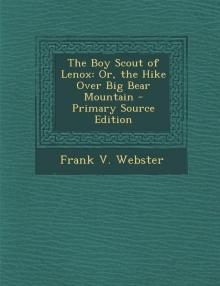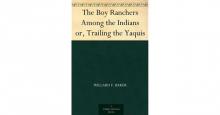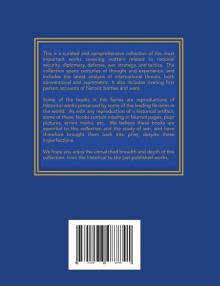- Home
- Frank V. Webster
Alfgar the Dane or the Second Chronicle of Aescendune
Alfgar the Dane or the Second Chronicle of Aescendune Read online
Produced by Martin Robb
ALFGAR THE DANE OR THE SECOND CHRONICLE OF AESCENDUNE:
A Tale of the Days of Edmund Ironside
by the Rev. A. D. Crake.
PREFACE.
CHAPTER I. THE DIARY OF FATHER CUTHBERT.
CHAPTER II. "ALFGAR, SON OF ANLAF."
CHAPTER III. THE NIGHT OF ST. BRICE.
CHAPTER IV. THE DANES IN WESSEX.
CHAPTER V. THE TRACKS IN THE FOREST.
CHAPTER VI. THROUGH SUFFERING TO GLORY.
CHAPTER VII. FATHER AND SON.
CHAPTER VIII. FATHER CUTHBERT'S DIARY.
CHAPTER IX. THE CAMP OF THE DANES.
CHAPTER X. CARISBROOKE IN THE ELEVENTH CENTURY.
CHAPTER XI. THE GLEEMAN.
CHAPTER XII. THE MONASTERY OF ABINGDON.
CHAPTER XIII. THE CITY OF DORCHESTER.
CHAPTER XIV. THE SON AND THE FAVOURITE.
CHAPTER XV. FATHER CUTHBERT'S DIARY AT CLIFFTON.
CHAPTER XVI. THE FEAST OF CHRISTMAS.
CHAPTER XVII. FOR HEARTH AND HOME.
CHAPTER XVIII. FATHER CUTHBERT'S DIARY.
CHAPTER XIX. THE ROYAL DEATHBED.
CHAPTER XX. THE MIDNIGHT FLIGHT.
CHAPTER XXI. EDMUND AND CANUTE.
CHAPTER XXII. SMOOTHER THAN OIL.
CHAPTER XXIII. WHO HATH DONE THIS DEED?
CHAPTER XXIV. THE ORDEAL.
CHAPTER XXV. FATHER CUTHBERT'S DIARY.
PREFACE.
The tale now presented to the indulgence of the public is the secondof a series of tales, each complete in itself, which, as stated in thepreface to the first of the series, have been told to the senior boysof a large school, in order to secure their interest in historicalcharacters, and to illustrate great epochs in human affairs by the aidof fiction.
Yet the Author has distinctly felt that fiction must always, in suchcases, be subordinate to truth, and that it is only legitimately usedas a vehicle of instruction when it fills up the gaps in the outline,without contradicting them in any respect, or interfering with theirdue order and sequence.
Therefore he has attempted in every instance to consult such originalauthorities as lay within his reach, and has done his best to presentan honest picture of the times.
The period selected on the present occasion is full of the deepestinterest. The English and the Danish invaders of their soil werestruggling desperately for the possession of England--a struggleaggravated by religious bitterness, and by the sanguinary nature ofthe Danish creed.
The reign of Ethelred the Unready, from his accession, after themurder of his innocent brother, until the scene depicted in thenineteenth chapter of the tale, was a tragedy ever deepening. Itsdetails will seem dark enough as read herein, but how utterly darkthey were can only be appreciated by those who study the contemporaryannals. Many facts therein given have been rejected by the Author astoo harrowing in their nature; and he has preferred to render thecontemplation of woe and suffering less painful, by a display of thosevirtues of patience, resignation, and brave submission to the Divinewill, which affliction never fails to bring out in the fold of Christ,whose promise stands ever fast, that the strength of His people shallbe equal to their needs.
With the death of the unhappy king, and the accession of his brave butunfortunate son, the whole character of the history changes.Englishmen are henceforth at least a match for their oppressors, andthe result of the long contest is the conversion of their foes toChristianity, their king setting the example, and the union of the tworaces--not the submission of one to the other. The Danish element hadbeen received into the English nation to join in moulding the futurenational character--to add its own special virtues to the typicalEnglishman of the future.
One more rude shock had yet to be sustained before the alloy offoreign blood was complete--the Norman Conquest. This is the subjectof the Third Story of Aescendune, which has yet to be written.
One character in the tale has always puzzled historians--a character,so far as the author knows, absolutely without redeeming trait--EdricStreorn. It is well said that no man is utterly bad, and perhaps hepossessed domestic virtues which were thought unworthy of theattention of the chroniclers; but as they picture him--now promptingEthelred to deeds of treachery against the Danes, now joining thoseDanes themselves, and surpassing them in cruelty--now seekingpretended reconciliation, only to betray his foe more surely, and inall this aided and supported by the weak, unprincipled king--as thuspictured there is scarcely a blacker character in history.
But more incomprehensible than the existence of so bad a man in such adark age is the renewed confidence ever accorded him, when, after morethan once betraying the armies of his country into the hands of theirfoes, and fighting openly in the hostile cause, he is again forgiven,nay, received into favour, and sent once more to command the men hehas already deceived, until he repeats the experiment, and when itfails is again admitted into confidence.
To some extent the Author has endeavoured to find possible solutionsof the mystery, but mystery it will remain until the day when allsecrets are known.
The death of this unhappy man is taken, in all its main details, froma comparison of the chroniclers, as are also all the chief historicalevents herein noted.
An objection has been raised to the modern English in which the Authorhas made his characters speak. He can only say in reply that theAnglo-Saxon in which they really expressed themselves would beunintelligible to all but the few who have made the study of ourancient tongue their pursuit--far more unintelligible to those ofordinary education than Latin or French. Therefore it would be mereaffectation to copy the later orthography of Chaucer, or to interlardone's sentences with obsolete words. The only course seems to be afair translation of the vernacular of the period of the tale into ourown everyday English. The Author anticipated this objection in thepreface to his earlier volume. He repeats his answer for those who maynot have seen the former book. A similar rule has guided him in theorthography of proper names; he has used the customary Latinisedforms.
In his descriptions of Dorchester and Abingdon he has been aided bythe kind information received from the present vicar of themagnificent Abbey Church, still existing in the former ancient town,and by the extensive information contained in the Chronicle of theAbbey of Abingdon, edited by the Rev. Joseph Stevenson, M.A. He hasalso to express his obligations to his friend Mr. Charles Walker,editor of the "Liturgy of the Church of Sarum," for valuableassistance in monastic lore.
The moral aim of the tale has been to depict the mental difficultieswhich our heathen forefathers had severally to encounter ere theycould embrace Christianity--difficulties chiefly arising from theinconsistencies of Christians--and to set forth the example of onewho, having found the "pearl of great price," sold all he had andbought it, forsaking all that could appeal to the imagination of awarlike youth--"choosing rather to suffer affliction with the peopleof God, than to enjoy the pleasures of sin for a season."
Yet his Christianity, like that of all other characters in the tale,is that of their age, not of ours, and men will differ as to itscomparative merits. "Unto whomsoever much is given, of him shall muchbe required."
The author dedicates this tale to his brother, engaged, like himself,in that most responsible task, the education of youth, in memory ofthose happy days when they pored together in rapturous delight overold legend or romantic lore in their father's home at that veryClifton (now Clifton Hampden) familiar to hearers or readers of thetale as the home of Herstan, and the scene of the heroic defence ofthe English dwelling against the Danes. It
will be a great reward forthe Author's toil should this little volume similarly gladden manyfiresides during the approaching Christmas, and perhaps cause some tothank God for the contrast between the Christmas of 1007 and that of1874.
A.D.C.
All Saints' School, Bloxham.
Advent, 1874.

 The Iron Boys in the Mines; or, Starting at the Bottom of the Shaft
The Iron Boys in the Mines; or, Starting at the Bottom of the Shaft Two Boy Gold Miners; Or, Lost in the Mountains
Two Boy Gold Miners; Or, Lost in the Mountains The Boys of Bellwood School; Or, Frank Jordan's Triumph
The Boys of Bellwood School; Or, Frank Jordan's Triumph Book of Cheerful Cats and Other Animated Animals
Book of Cheerful Cats and Other Animated Animals Ralph of the Roundhouse; Or, Bound to Become a Railroad Man
Ralph of the Roundhouse; Or, Bound to Become a Railroad Man Jack of the Pony Express; Or, The Young Rider of the Mountain Trails
Jack of the Pony Express; Or, The Young Rider of the Mountain Trails The Young Firemen of Lakeville; Or, Herbert Dare's Pluck
The Young Firemen of Lakeville; Or, Herbert Dare's Pluck Boy Scouts of Lenox; Or, The Hike Over Big Bear Mountain
Boy Scouts of Lenox; Or, The Hike Over Big Bear Mountain Book of One Syllable
Book of One Syllable Air Ship Boys : Or, the Quest of the Aztec Treasure
Air Ship Boys : Or, the Quest of the Aztec Treasure Boy Pilot of the Lakes; Or, Nat Morton's Perils
Boy Pilot of the Lakes; Or, Nat Morton's Perils Ralph in the Switch Tower; Or, Clearing the Track
Ralph in the Switch Tower; Or, Clearing the Track Airship Andy; Or, The Luck of a Brave Boy
Airship Andy; Or, The Luck of a Brave Boy Boys of the Wireless; Or, A Stirring Rescue from the Deep
Boys of the Wireless; Or, A Stirring Rescue from the Deep Alfgar the Dane or the Second Chronicle of Aescendune
Alfgar the Dane or the Second Chronicle of Aescendune Boy Knight
Boy Knight Boy Ranchers Among the Indians; Or, Trailing the Yaquis
Boy Ranchers Among the Indians; Or, Trailing the Yaquis Boy from the Ranch; Or, Roy Bradner's City Experiences
Boy from the Ranch; Or, Roy Bradner's City Experiences Boy Ranchers in Death Valley; Or, Diamond X and the Poison Mystery
Boy Ranchers in Death Valley; Or, Diamond X and the Poison Mystery Boy Ranchers on the Trail; Or, The Diamond X After Cattle Rustlers
Boy Ranchers on the Trail; Or, The Diamond X After Cattle Rustlers Bob the Castaway; Or, The Wreck of the Eagle
Bob the Castaway; Or, The Wreck of the Eagle Boy Ranchers in Camp; Or, The Water Fight at Diamond X
Boy Ranchers in Camp; Or, The Water Fight at Diamond X Boy Ranchers; Or, Solving the Mystery at Diamond X
Boy Ranchers; Or, Solving the Mystery at Diamond X Boy's Ride
Boy's Ride Bob Hunt in Canada
Bob Hunt in Canada Boy Ranchers on Roaring River; Or, Diamond X and the Chinese Smugglers
Boy Ranchers on Roaring River; Or, Diamond X and the Chinese Smugglers Alida; or, Miscellaneous Sketches of Incidents During the Late American War.
Alida; or, Miscellaneous Sketches of Incidents During the Late American War. All Aboard: A Story for Girls
All Aboard: A Story for Girls Bob Chester's Grit; Or, From Ranch to Riches
Bob Chester's Grit; Or, From Ranch to Riches Bob Cook and the German Spy
Bob Cook and the German Spy Boy Ranchers at Spur Creek; Or, Fighting the Sheep Herders
Boy Ranchers at Spur Creek; Or, Fighting the Sheep Herders